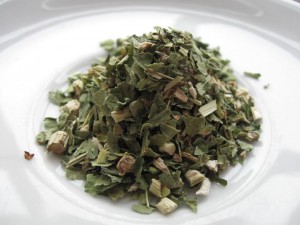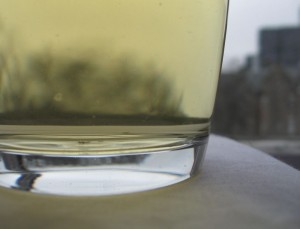Last updated: May 11, 2013
What is Echinacea?
Echinacea tea is a tisane (a herbal tea) made from the leaves or root of plants in the Echinacea genus, most commonly Echinacea purpurea and Echinacea pallida.
Echinacea is a genus of plants in the daisy family indigenous to North America. Long before the founding of the modern United States, these plants were used by native people in the belief they had a wide range of medical applications1.
Modern medical study of echinacea has focused on prevention and treatment of viral infections like the common cold.
Let’s start with a description of echinacea tea and move on to its medical properties.
The different types of echinacea
There are nine species of echinacea, two or three of which are commonly used to make tea. Unfortunately, it’s very common for sellers of echincea tea to omit the species of echinacea their product is made from.
Things become even more complicated when it comes to the part of the plant used to make tea. The leaves, roots, flowers or a mixture of some or all of these can be used. With loose-leaf echinacea tea it’s relatively easy to tell which parts are present. With teabags, it’s much harder.
This is significant because one of the most common reasons for drinking echinacea tea is the belief that it can prevent or speed recovery from the common cold or flu. It’s extremely difficult to interpret the medical evidence for these kinds of claims when it’s uncertain what’s actually in any given cup of echinacea tea.
For this page I’ll be tasting a tea made from the cut leaves of Echinacea purpurea. In the future, I’ll try to update this page with tasting notes for Echinacea purpurea root tea and tisanes made from other Echinacea species.
Appearance
The primary color is the dark grey-green of the echinacea leaf. The thick white stalk of the flower is also visible. The dry tea has a faint, sharp smell a little like pine wood.
How to make echinacea tea
- Measure out a generous teaspoonful of echinacea per cup of tea you plan to make
- Pour over freshly boiled water and cover
- Leave to infuse for 10-20 minutes.
- Strain out the tea and serve
Drinking echinacea tea
Color: faint yellow-green fading to grey.
Aroma: bright, sharp freshness of pine needles. Invigorating.
Taste: a big, soft, rounded flavor of meadowsweet. I realize that’s not the most helpful tasting note in the world, but I’m afraid it’s about the best I can do. The only other comparison I can make is to marshmallow, but to the herb and not the confection, which is probably even more confusing.
The flavor is not at all what I was expecting. There is a note of pine here, but it’s far subtler than I would have guessed and it’s woodier than the aroma would suggest.
The taste is pleasant but unremarkable. In a blind taste test I doubt I would be able to identify this tisane as echinacea at all.
Benefits of echinacea tea
Echinacea for colds
The most recent meta-analysis I could find in the literature was published in 2007. It included results from 14 previous clinical trials. The authors concluded:
An analysis of the current evidence in the literature suggests that echinacea has a benefit in decreasing the incidence and duration of the common cold; however, large-scale randomized prospective studies controlling for variables such as species, quality of preparation and dose of echinacea, method of cold induction, and objectivity of study endpoints evaluated are needed before echinacea for the prevention or treatment of the common cold can become standard practice.
This is largely the same conclusion reached by previous meta-analyses: there’s some evidence to suggest that taking echinacea lowers your risk of getting a cold and can reduce the duration of an existing cold, but the balance of evidence is not conclusive. It’s also hard to reach any kind of firm statement when there are so many difference kinds of echinacea products and echinacea teas.
A large clinical trial of 755 people was conducted in 2012 to test the safety and effectiveness of Echinacea purpurea extract in preventing the common cold. This paper is available for free at Pubmed Central.
The present work described the largest clinical trial to date that tested the safety and efficacy of Echinacea and investigated its risk/benefit in a long-term treatment. Prophylactic treatment with Echinaforce [Echinacea purpurea extract] over 4 months appeared to be beneficial for many reasons. First, [Echinacea purpurea extract] showed an advantageous safety profile; it did not induce any health risk above that reported with the placebo treatment. Second, prolonged treatment with [Echinacea purpurea extract] was associated with significant therapeutic benefits.
Participants in this trial took an alcohol extract of Echinacea purpurea equivalent to 2.4 grams per day. If they contracted a cold, participants were told to increase the dose to 4 grams per day. The extract used in this study consisted of 95% Echinacea purpurea herb and 5% Echinacea purpurea root. It’s a commercial product called Echinaforce.
The trials from the meta-analysis used a wide range of doses of echinacea extracts and echinacea juices. The dosage for echinacea supplements ranged from 0.1 grams per day to 6 grams per day.
A teaspoon of dried echinacea tea weighs approximately 2-4 grams, depending on the type of echinacea, how it is prepared etc. It’s extremely hard to compare a given weight of echinacea tea with a given weight of echinacea extract. Not all compounds in the echinacea will dissolve in the tea, and the extent to which they do dissolve will depend on how finely the tea is cut, how hot the water is and how long it’s left to infuse for. Without access to a high-performance liquid chromatograph, these are questions I’m unequipped to answer.
In short, there is a little evidence that taking echinacea tea every day can reduce the frequency and severity of a cold, but there are too many variables and uncertainties to recommend echinacea tea as an effective treatment for the cold.
Echinacea side effects
Taken over a relatively short period (e.g. for 4 months), echinacea appears to be safe and have few side effects for healthy adults. In the largest clinical trial of Echinacea purpurea to date, the number of participants who experienced adverse effects was almost exactly equal between the Echinacea and placebo treatment groups. No participants in the Echinacea group experienced any serious adverse effects. Blood tests after the end of the trial showed no significant differences between participants taking Echinacea and participants taking a placebo.2
Because echinacea might affect the immune system, people with any long term medical problems are advised to speak to their doctor before taking any echinacea products. This is especially true for people with an autoimmune disorder.
Final thoughts
Echinacea tea is a middle-of-the-road tisane. It’s flavor and appearance are pleasant without being exceptional. There’s some limited evidence that Echinacea products might help fend of colds, but from the available evidence taking an Echinacea purpurea extract would be more effective than drinking echinacea tea.
I suppose that drinking echinacea tea might be a good option for people hoping to avoid getting a cold in the first place; although the evidence suggests that an extract is more effective, it’s vastly more expensive than echinacea in tea form. I pay about $10.00 for 500 grams of echinacea tea, enough to make about 160 cups (or roughly 1 cup per day for an entire winter). In contrast, a 3.4oz bottle of Echinaforce Liquid, the Echinacea purpurea extract used in the largest clinical trial of echinacea to date3, costs about $20 on Amazon.com. At the dosage used in the clinical trial to prevent colds, that would last just over a month. It might be more cost effective to use echinacea tea for prevention of colds and echinacea extract to treat them when they do arrive. But I must stress, this is very speculative. The only thing I can really comment on with any certainty is the taste of echinacea tea: lackluster.
- Applications of the Phytomedicine Echinacea purpurea (Purple Coneflower) in Infectious Diseases [↩]
- Safety and Efficacy Profile of Echinacea purpurea to Prevent Common Cold Episodes: A Randomized, Double-Blind, Placebo-Controlled Trial [↩]
- Safety and Efficacy Profile of Echinacea purpurea to Prevent Common Cold Episodes: A Randomized, Double-Blind, Placebo-Controlled Trial [↩]


